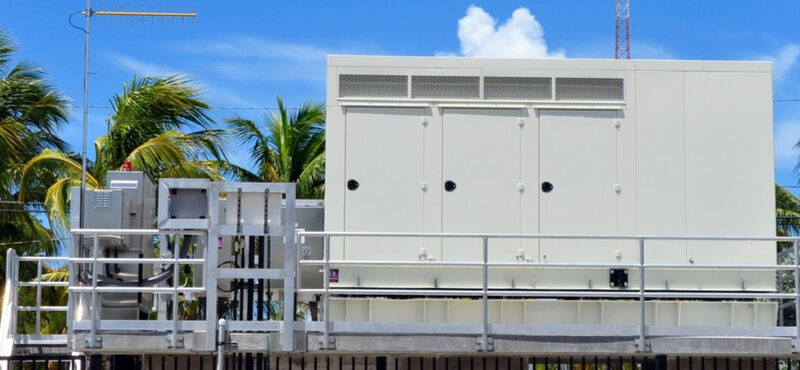Cooling Power Corp has generators when you need them, available 24 hours a day, seven days a week. With a huge selection of portable diesel generators available for rent or sale, Cooling Power ranks among the leading generator experts in the greater Miami area. Today, Cooling Power shares the facts you need to know about generators, including what generator is the ideal choice to meet your needs.
Generator Size
The ideal size generator, whether for your business, organization, or home is dependent what it needs to fuel – electronics, appliances, air conditioners, pumps, equipment, and more. For home use, most homes use approximately 150 amps of 240-volt power to operate everything in the house simultaneously. Small appliances and lighting utilizes 120-volt power, while large appliances use 240-volt power. Businesses use considerably more. Determining the amps and watts needed can help you chose the right size generator for your application. Every business and home is unique, and the professionals at Cooling Power Corp can help you configure the option required to meet your needs.
Rent or Buy?
Cooling Power Corp has generators available to rent or to purchase and can help you determine the most cost-effective route for your needs. If your home or business faces frequent blackouts and power outages, you’d likely find purchasing a generator to be the most cost-effective. Often if you only need a generator for a special project, like during a renovation, you might find renting to the be better option. Of course, purchasing a generator that you will only use occasionally might work for your situation as even stand-by generators last for years.
Generators – Power Factor (pf) and Service Factor
When you begin looking at generators, you are often exposed to new, unfamiliar terms, such as power factor (pf) and service factor. The power factor defines the ratio of kilowatts (kW) to kilovolt amps (kVa) from the electrical load. The power factor is determined by the connected load, so the higher the power factor, the more efficiently the energy is transferred to the load. Differing power factors mean lower efficiency and higher costs.
The service factor is the generator’s overload capacity. For example, a 1.15 service factor and 10-hp motor means 11.5 hp for the short term. If you overutilize the service factor, the generator will likely be compromised.
Generator Power Ratings Explained
Standby, prime, and continuous make up the types of power ratings for generators. In general, standby power generators are used for maintenance and testing procedures or in the event of a power outage. These generators are the perfect fit for temporary applications where another reliable power source provides continuous power.
Prime power rated generators deliver unlimited run time and can be used as the primary power source, as opposed to a back-up or standby power source. These generators are typically used in remote areas where no other source of power is available.
Continuous power generators are similar in application to prime power generators, but unique due to base load rating. These generators are not suited for variable loads or overload circumstances, though they do offer a consistent power supply when needed.
The ATS
The ATS or automatic transfer switch is the device which transfers power from the standard source to the emergency source (the generator). Recognizing regular power system failure, the ATS automatically powers up the generator, and shuts it off when the regular power source is back online.
Choosing the Best Generator – Cooling Power Corp Can Help
At Cooling Power Corp, you’ll find the best in diesel power generators designed to help your business when you need it. Call today and let’s find the generator to meet the needs of your business, organization, or upcoming event.

